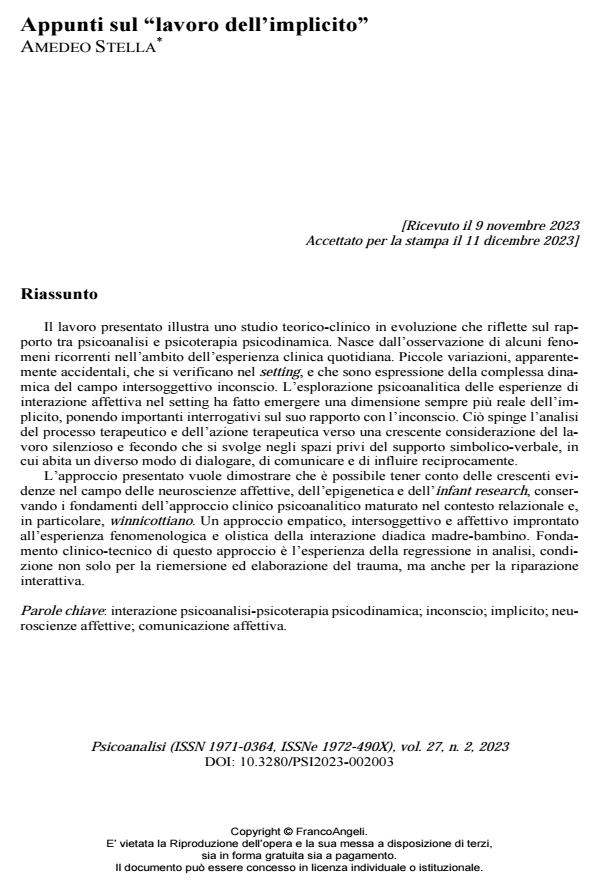Notes on the 2work of the implicit"
Journal title PSICOANALISI
Author/s Amedeo Stella
Publishing Year 2024 Issue 2023/2
Language Italian Pages 32 P. 49-80 File size 295 KB
DOI 10.3280/PSI2023-002003
DOI is like a bar code for intellectual property: to have more infomation
click here
Below, you can see the article first page
If you want to buy this article in PDF format, you can do it, following the instructions to buy download credits

FrancoAngeli is member of Publishers International Linking Association, Inc (PILA), a not-for-profit association which run the CrossRef service enabling links to and from online scholarly content.
The paper illustrates an evolving theoretical-clinical study about the relationship be-tween psychoanalysis and psychodynamic psychotherapy. It comes from the observation of some recurrent phenomena in the context of daily clinical experience. Small varia-tions, apparently accidental, that occur in the setting, and that are an expression of the complex dynamics of the unconscious intersubjective field. The psychoanalytic exploration of the experiences of affective interaction in the set-ting has brought out an increasingly real dimension of the implicit and its relationship with the unconscious. This pushes the analysis of the therapeutic process and therapeutic action towards a growing consideration of the silent and fruitful work that takes place beyond the symbolic-verbal support, where is a different way to dialogue, to communi-cate and influence each other. The approach presented aims to demonstrate that it is possible to take into account the growing evidence in the field of affective neuroscience, epigenetics and infant re-search, preserving the foundations of the psychoanalytic clinical approach developed in the relational context. An empathic, intersubjective and affective approach based on the phenomenological and holistic experience of mother-infant dyadic interaction. The clini-cal-technical foundation of this approach is the experience of regression in analysis, a condition not only for resurfacing and processing of trauma, but also for interactive re-pair.
Keywords: the interplay between psychoanalysis and psychodynamic psychotherapy; unconscious; implicit; affective neuroscience; affective communication.
Amedeo Stella, Appunti sul "lavoro dell’implicito" in "PSICOANALISI" 2/2023, pp 49-80, DOI: 10.3280/PSI2023-002003